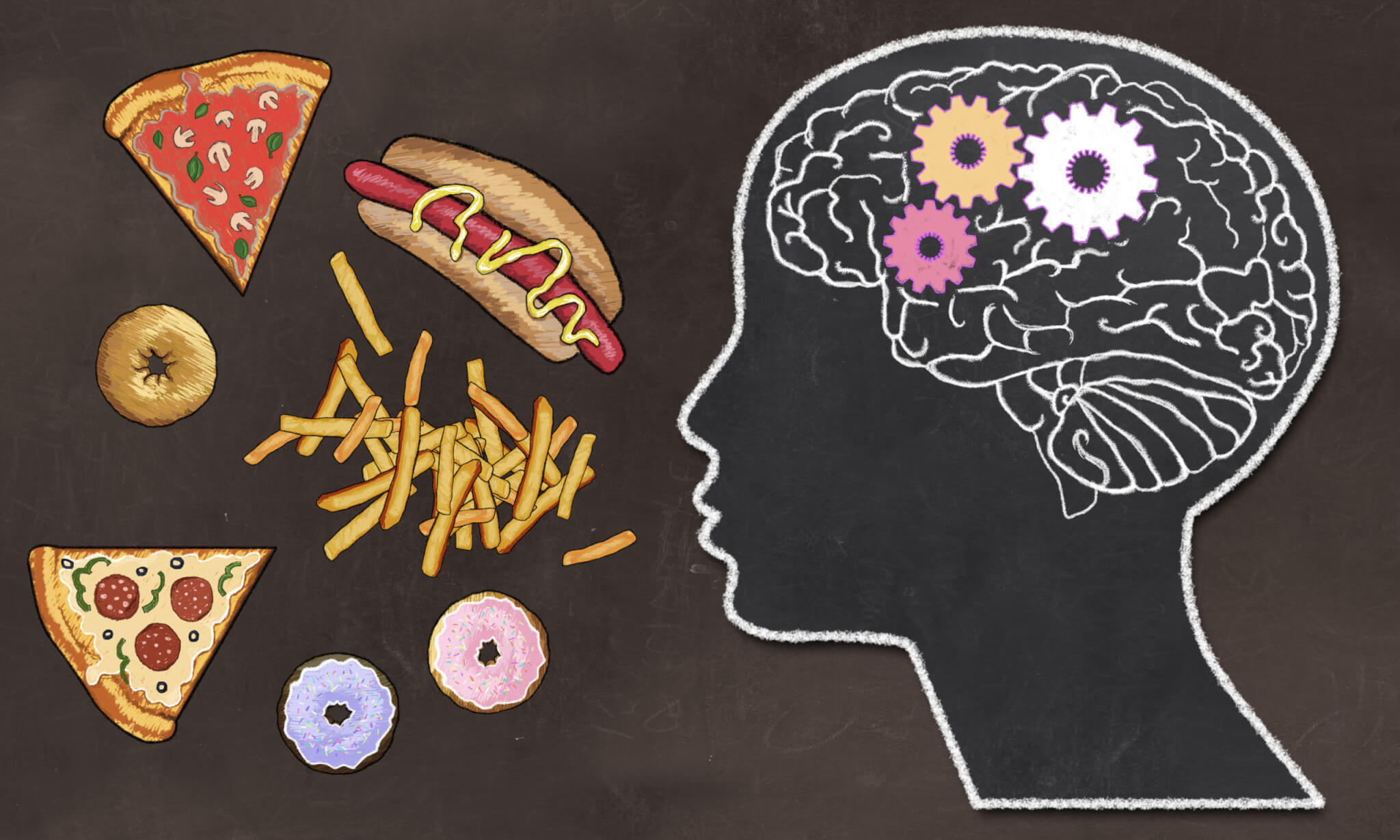LOS ANGELES — If you’re guilty of opening up the fridge or pantry right after eating a meal, it might not just be because your appetite is too big. Psychologists from the University of California Los Angeles (UCLA) have discovered that people who do this might have overactive food-seeking neurons.
During experiments with mice, researchers found a circuit in the brain that makes them crave food and go looking for it, even when they weren’t hungry. When stimulated, this cluster of cells drove the mice to vigorously seek out food and to prefer fatty comfort foods like chocolate instead of healthier foods like vegetables. Humans have the same types of cells, and if these specific findings can be confirmed in people, the research could unlock new ways of understanding eating disorders.
“This region we’re studying is called the periaqueductal gray (PAG), and it is in the brainstem, which is very old in evolutionary history and because of that, it is functionally similar between humans and mice,” says corresponding author Avishek Adhikari, a UCLA associate professor of psychology, in a media release. “Although our findings were a surprise, it makes sense that food-seeking would be rooted in such an ancient part of the brain, since foraging is something all animals need to do.”
“Activation of the entire PAG region causes a dramatic panic response in both mice and humans. But when we selectively stimulated only this specific cluster of PAG neurons called vgat PAG cells, they did not alter fear, and instead caused foraging and feeding,” Adhikari adds.
The team injected a virus into mouse brains that was genetically engineered to make the brain cells generate a light-sensitive protein. Once the team shined a laser on the cells using a fiber-optic implant, the new protein would turn the light into electrical neural activity in the cells. A small microscope developed at UCLA was fastened to each mouse’s head to record the neural activity of cells.
The vgat PAG cells fired and kicked the mice into high gear, making them go after live crickets and other non-prey food, even after having just eaten a meal. The stimulation also resulted in the mice chasing moving objects that weren’t food at all, like ping pong balls, although they didn’t actually try to eat them. In general, mice seemed interested in figuring out everything in their enclosure.
“The results suggest the following behavior is related more to wanting than to hunger,” explains Adhikari. “Hunger is aversive, meaning that mice usually avoid feeling hungry if they can. But they seek out activation of these cells, suggesting that the circuit is not causing hunger. Instead, we think this circuit causes the craving of highly rewarding, high-caloric food. These cells can cause the mouse to eat more high-calorie foods even in the absence of hunger.”

The mice with activated vgat PAG cells craved fatty foods so much that they were willing to withstand shocks to their feet just to reach them. Full mice typically wouldn’t do this. On the other hand, when the researchers injected a virus engineered to produce a protein that turns down the cells’ activity under light exposure, the mice were less likely to rummage, even if they were hungry.
“Mice show compulsive eating in the presence of aversive direct consequences when this circuit is active, and don’t search for food even if they’re hungry when it’s not active. This circuit can circumvent the normal hunger pressures of how, what and when to eat,” says Fernando Reis, a UCLA postdoctoral researcher who did most of the experiments in the study and came up with the idea to study compulsive eating. “We’re doing new experiments based on these findings and learning that these cells induce eating of fatty and sugary foods, but not of vegetables in mice, suggesting this circuit may increase eating of junk food.”
Humans also have vgat PAG cells in the brainstem. It’s possible that the circuit could be overactive in someone, driving cravings when they’re not hungry. On the other hand, if the circuit is under-stimulated, they could have less interest and less enjoyment in eating when hungry. This type of mechanism could possibly play a role in eating disorders like anorexia. More research in this area could unlock different treatment targets.
A Dietitian’s Take
This research proposes interesting questions. As a registered dietitian, I notice that the reasons people overeat or under-eat are incredibly varied. It may not be as simple as brain circuitry, but this seems to be a growing area of research that could help answer some questions for certain circumstances.
Since this research was conducted on mice, it would be interesting to see how translatable the findings are in human research, especially since vgat PAG cells are present in people as well. People who eat even when they’re not hungry often describe it as “mindless” eating that they attribute to stress, boredom, or just wanting to taste things. It would be interesting to see how (if at all) these things may be linked.
The findings are published in the journal Nature Communications.
